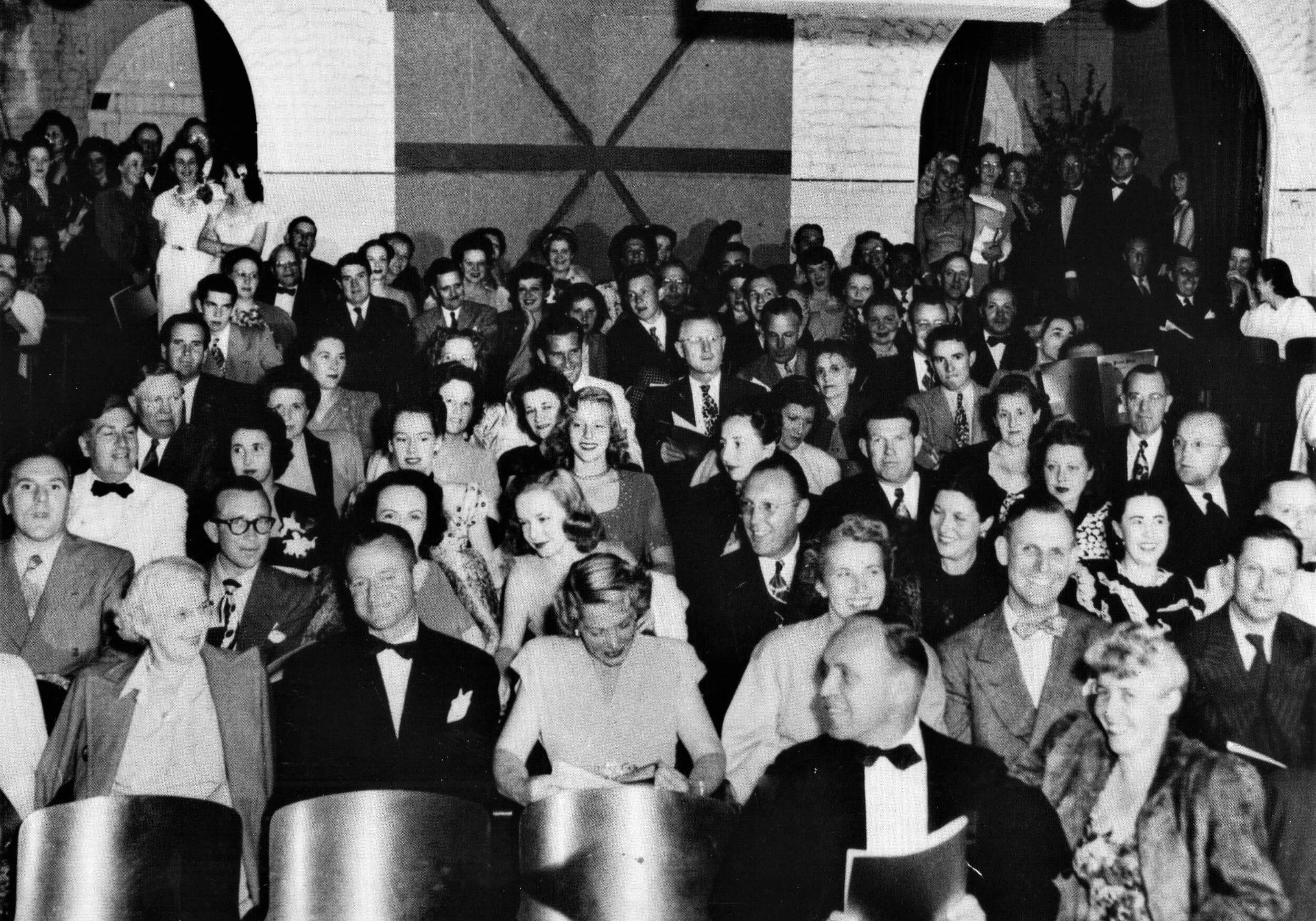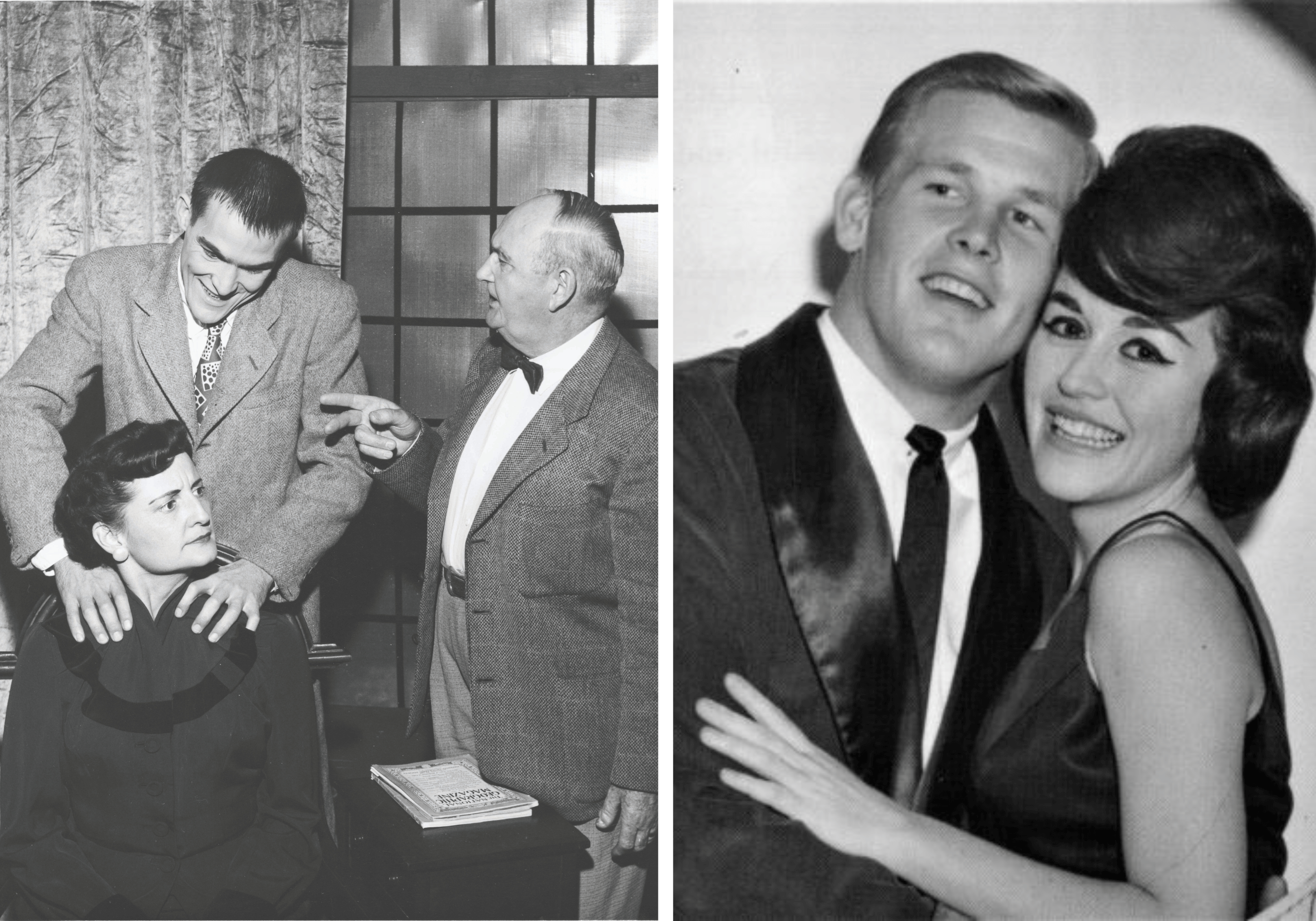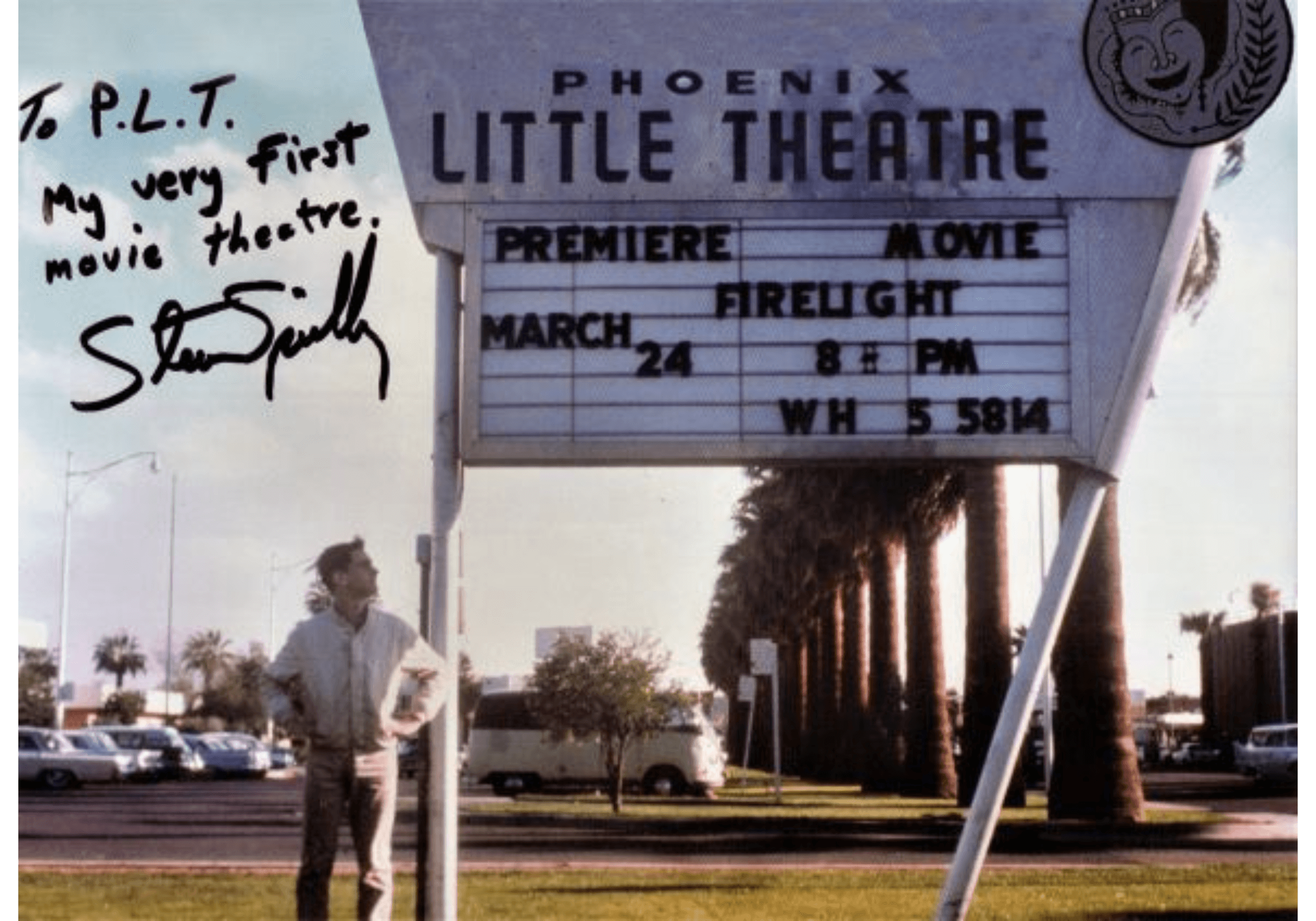The Phoenix Theatre Company (TPTC) has thrived for a century in the fickle entertainment business thanks in part to its talented ensembles whose creativity knows no bounds. “The battery packs for the mics used in every show are covered with non-lubricated condoms to protect the electronics from sweaty actors,” Cathy Dresbach says. The actress reveals that during the 2016 run of Twist Your Dickens, the cast made beautiful, festive Christmas wreaths out of the used condoms as gifts for their stage managers. “Can’t find those on Amazon!” she crows.
Such unrehearsed moments are all in a day’s work with TPTC. Celebrating more than 100 years as Arizona’s oldest arts organization, TPTC’s success was hardly guaranteed with its hardscrabble roots in a venue built for animals, not actors.

Carriage House audience, 1940. (Photo: Douglas C. Towne)
TPTC, originally known as the Phoenix Players, was launched in 1920. It was founded by a trio of visionaries—Harry Behn, a Harvard Drama School alumnus; Katherine Wisner McCluskey, owner of a drama school; and Maie Bartlett Heard, wife of The Arizona Republic publisher Dwight Heard. In 1924, the troupe changed its name to Phoenix Little Theatre, and Heard generously offered the couple’s barn at Central Avenue and McDowell Road as a playhouse.
Enthusiastic theatre patrons were undeterred by the primitive conditions. “Attendees brought blankets in the winter and fans in the summer, and even though the theatre installed a swamp cooler, it was so loud it could only run during intermission. The old backless wooden benches were replaced with folding chairs whose contours disagreed with the human form,” notes the book The Phoenix Little Theatre: 65 Years of Memories.

Left: Mousetrap, 1959. Right: Nick Nolte in The Rose Tattoo, 1968. (Photos: Douglas C. Towne)
Performances in what was dubbed the Old Coach House ranged from Shakespeare to vaudeville. The theatre thrived during the Roaring ‘20s, struggled through the Great Depression, and presented productions that featured predominantly female casts during World War II because of a shortage of male thespians.
In 1952, theater director Steve Shadegg led the movement to build a new playhouse at the site, which continues in operation today. The new theatre became a stage for a controversial religion when L. Ron Hubbard moved to Phoenix in 1952. Over the next three years, Hubbard gave more than 600 lectures about the tenets of Scientology, many of them at TPTC.

Steven Spielberg at the premiere of Firelight, 1964. (Photo: Douglas C. Towne)
In 1964, TPTC unknowingly made cinema history with a screening of Firelight, Steven Spielberg’s first feature-length movie and the forerunner to Close Encounters of the Third Kind. Spielberg, then an Arcadia High School student, worked part-time at TPTC and used the theatre’s props in his film. An audience of 500 viewed the rare science-fiction movie, the only copy of which later disappeared.
Even after a century, TPTC retains the ability to astound, both on and off the stage. “I was standing naked backstage being fitted for my custom red leather G-string, with a male costume designer kneeling in front of me getting it just right,” actor Brian Runbeck says of his 2008 role in The Full Monty. “The wardrobe supervisor’s husband showed up unexpectedly with bagels. Not a word was spoken, but that was clearly the last thing he expected to see. He quietly set the bagels down and left.”
Such is the je ne sais quoi of the theatre.
Douglas C. Towne is the editor of Arizona Contractor & Community magazine, www.arizcc.com




